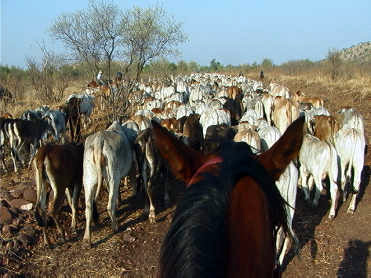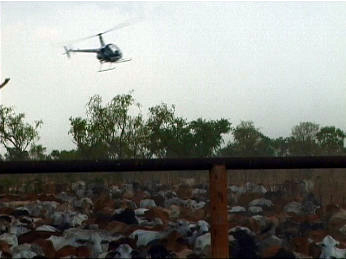THEME: ‘Cattle Ranching’
SUBJECT AREA: Maths
TOPIC: Money management - cattle mustering costs
Your job is to hire a crew to muster a large paddock (gather cattle from a large pasture). Not only is efficiency important, but you must complete the work in the most economical way possible. The paddock is 300 square kilometres, extremely rocky, and the cattle are scattered throughout. The options are to hire seven ringers (drovers) on horseback, or to hire a heli-mustering company using single pilot helicopters. Which do you think would be the most economical? Let’s take a look…
A ringer gets $100/day so a crew of nine would cost a station $900\day to employ. Cost of food for the crew, fuel for vehicles and assorted expenses can run an additional $100/day. Total: Cow camp costs: $1000\day. Due to the paddock’s size and rockiness, it will take approximately one week for the ringers to muster it. Total cost to complete the muster: $7000

To hire one helicopter to muster the paddock would cost a station $240/hour. This includes the use and maintenance of the helicopter and pilot’s fee of $60/hour. Helicopter fuel is another expense at $60/hour. Total: $300/hour. For a ten-hour day of work, one helicopter would cost $3000. Due to the quickness of travel and the ease with which a helicopter can move about the paddock, mustering time is considerably reduced as horses would have to negotiate the rough terrain, which would take longer to muster.

As a cattle station manager, which do you think would be the most efficient way to complete the mustering?
Suggested activities: Compare the costs of the mustering techniques, predicting the length of time each would take to muster the paddock. Analyse your costs for each and select the most efficient way to complete this job. (Hint: two helicopters mustered this pasture in five hours.) What would be the total costs involved and which is the most economical way to complete this job?
April